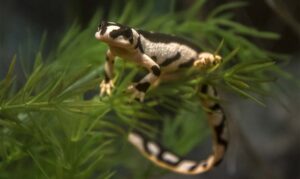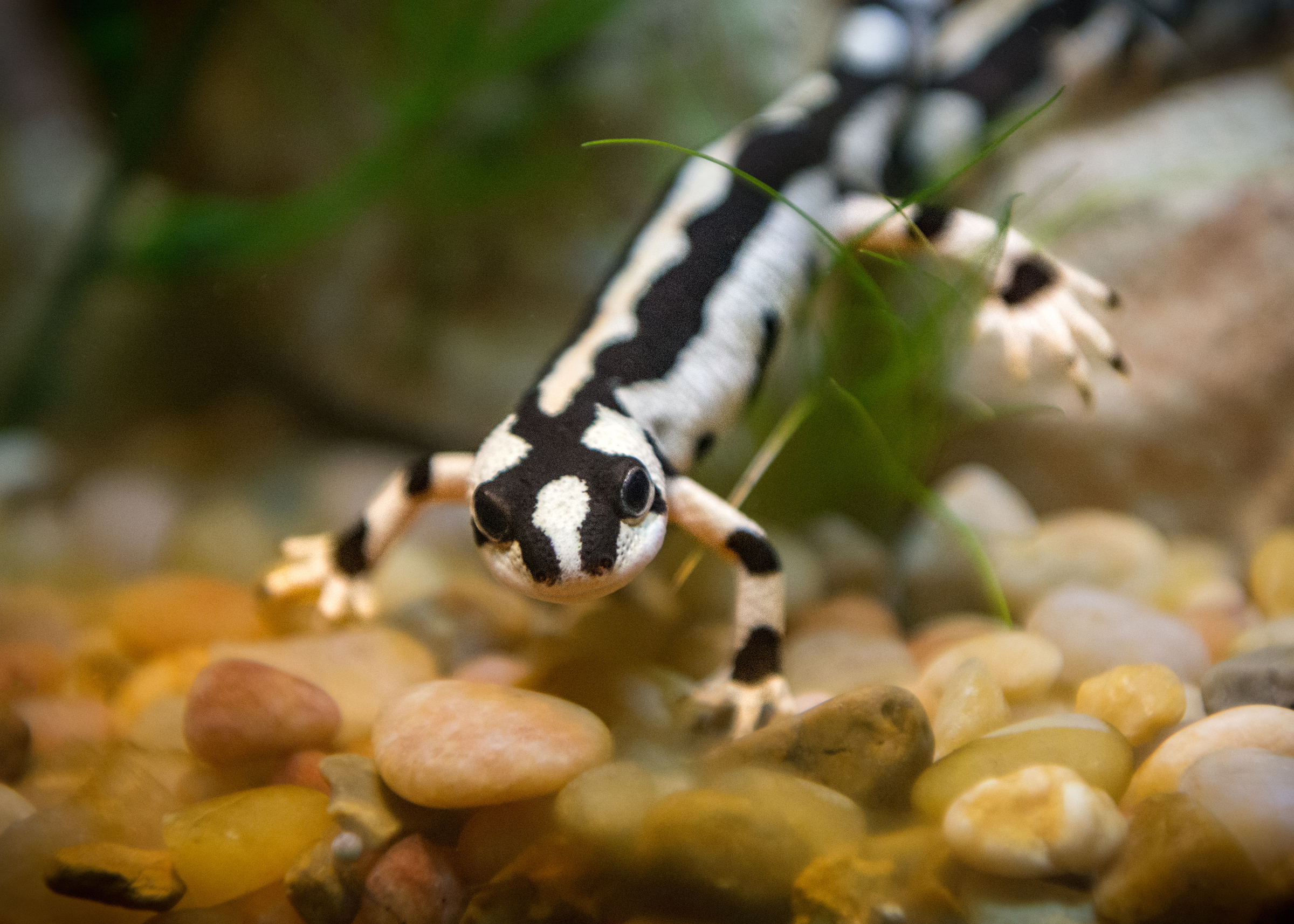About
All newts are salamanders but not all salamanders are newts; newts are a type of salamander that generally spend most of the year living on the land. Newts look like a cross between a lizard and a frog. The have moist, smooth skin like frogs and long bodies and tails like lizards. Most newts can regenerate body parts, organs, heart tissue, parts of their nervous system, and even their eyes!
Iranian harlequin newts (also known as emperor spotted newts) live in streams and pools of water that dry up after three to four months. They spend the hot summer months in unused burrows, and during the hottest months, they estivate, beginning a period of reduced metabolic activity like hibernation, but in response to heat rather than cold. Bold orange and black colors trick predators into believing they are toxic to eat. Recent data indicates there are too few Iranian harlequin newts left to sustain a wild population. This newt is regularly collected for the pet trade and climate change has increased the number and duration of droughts, contributing to the declining wild population of this species.


HABITAT
Iranian harlequin newts are found only in four remote mountain streams and small pools in Iran.
DIET
These amphibians are carnivorous. They eat worms, slugs, amphibian eggs, and fish eggs. Their larvae are also carnivorous, eating insect larvae and small crustaceans.
PHYSICAL CHARACTERISTICS
An adult Iranian harlequin newt has a body length of five inches. Their lifespan in the wild is unknown, but in human care the average lifespan is six to eight years.
LOCATION WITHIN THE ZOO
You’ll find this animal in the Damp Forest section of the LAIR. See Zoo Map.



